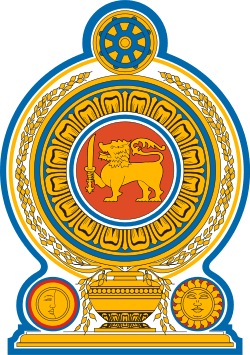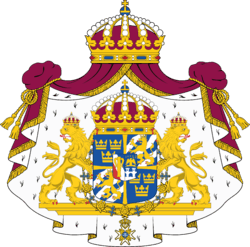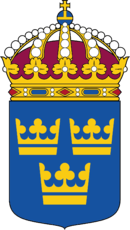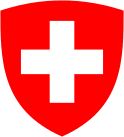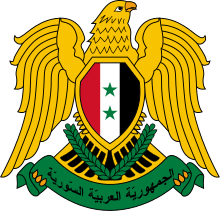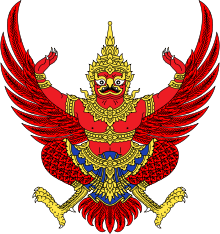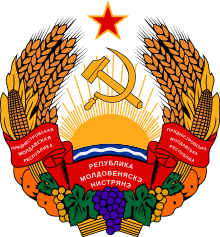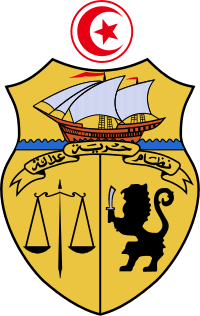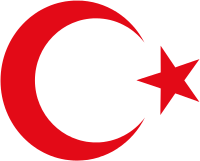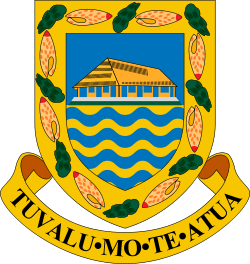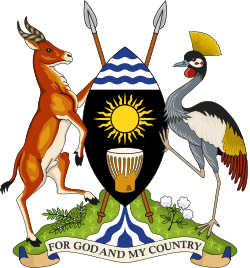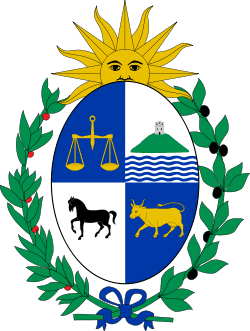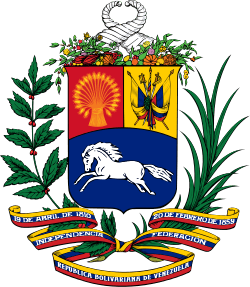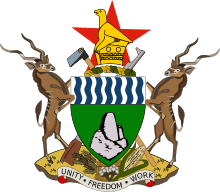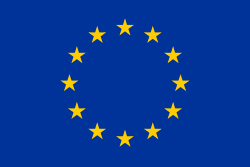Gallery of country coats of arms
This gallery of country coats of arms shows the national coat of arms, an emblem serving a similar purpose, or both (such as greater and lesser coat of arms, national emblem or seal) of each of the countries in the list of sovereign states.
For a symbol to be called a coat of arms, it should follow the rules of heraldry; if it doesn't, it is per definition not a heraldic achievement but some other type of symbol. As many countries do not have heraldic achievements their emblems are presented here regardless since these emblems serve the same purpose as national coats of arms in the international community. What type of symbol each emblem is, is written after the word type in the gallery.
There is a link for every coat of arms or other national symbol to the article describing that symbol in particular.
In some cases, a rival coat of arms (symbol of a rival regime) or a legal variant of the coat of arms is shown in the column to the right, as an alternate symbol. If so, this is also described in the description part of the gallery. Countries and regimes recognised by only a few other countries are marked with a light red colour. (Note: The display of rival arms in no way implies that Wikipedia takes a stand in the political question regarding which regime is the legal one.)
A
| Display | Comments | Alternate symbol |
|---|---|---|
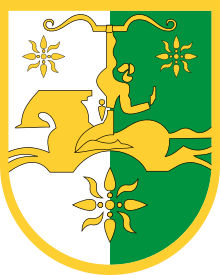 | Country: Abkhazia (independence not universally recognized) | .svg.png) |
| Type: heraldic achievement | ||
| Link: Emblem of Abkhazia | ||
| Description: The arms of the Republic of Abkhazia was adopted in 1992, after it declared its secession from Georgia. It is a shield divided per pale into white and green. On this are placed charges in gold.[1] The arms have no direct connection to old Abkhazian arms.
Alternate coat of arms: The Autonomous Republic of Abkhazia within Georgia has been granted arms by the State Council of Heraldry. These arms are quartered and depict an image of St George in the first quarter, the seven green and white stripes from the Abkhazia flag in the second and third quarters and the arms of the House of Shervashidze in the fourth.[2] To have the Georgian arms in the first field shows it as arms of precedence. For Georgia, these are canting arms and predates the Russian conquest of Georgia and Abkhazia; the similar St George arms used by Russia has a different origin, even if they depict the same saint. The princely House of Shervashidze used to rule Abkhazia in the time of the Kingdom of Georgia. It is not uncommon for the arms of former ruling houses to become part of the territorial arms of the area they once ruled, another example of this can be found in the coat of arms of Sweden. | ||
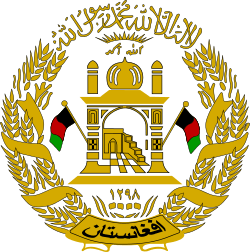 | Country: Afghanistan | |
| Type: Islamic/Socialist emblem | ||
| Link: Emblem of Afghanistan | ||
| Description: The emblem of Afghanistan takes inspiration both from traditional Islamic art and the so-called "Socialist heraldry" which was common in the Soviet Union and its satellite states. The latest incarnation of the emblem has the added inscription of the shahadah in Arabic at the top, common in Islamic iconography and national symbols of Moslim countries. Below it is the image of a mosque. Attached to the mosque are two flags, in the colours of the flag of Afghanistan; this kind of cross-over with vexillology have been common for national symbols in the last centuries, like in the emblems of Haiti. The Maldives, Yemen and many national coats of arms in Latin America. Beneath the mosque is an inscription that states the name of the nation, a practice often used in seals but almost never in heraldic achievements. Around the mosque is a sheaves of wheat, like often found in the national emblems of "Socialist heraldry", and the emblem bears the hijri year 1298 (1919 in the Gregorian calendar), the year Afghanistan's independence was recognised by the British Empire.
Afghanistan has changed symbols many times over the years. The former Taliban regime used another emblem but in the same emblematic style. | ||
 | Country: Albania | |
| Type: Heraldic achievement | ||
| Link: Coat of arms of Albania | ||
| Description: The coat of arms of Albania is an adaptation of the flag of Albania. It is based on the flag and seal of national hero Gjergj Kastriot Skanderbeg. The charge above the head of the two-headed eagle is the helmet of Skanderbeg.
In Albania, like in some other countries in South East Europe, sable (black) is considered to be a "neutral" heraldic tincture, not affected by the rule of tincture and it is therefore acceptable to display the black eagle on a red field. The double-headed eagle is originally an imperial symbol from the Roman empire. While the eagles in the arms of Austria and Germany have their origin in the Holy Roman Empire, the Albanian eagle, like the one in neighbouring Serbia, can trace its roots to the Byzantine Empire to which these two countries belonged before they were conquered by the Turks. | ||
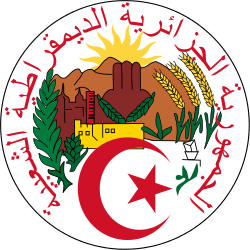 | Country: Algeria | |
| Type: Coloured seal/Islamic symbol | ||
| Link: Emblem of Algeria | ||
| Description: Contained on the emblem is the crescent and star that is also found on the flag of Algeria, and is a symbol of Islam. The crescent can be found in the arms and symbols of many Muslim countries, cf Brunei, Mauretania and Singapore. The text that rings the emblem says in Arabic: الجمهورية الجزائرية الديمقراطية الشعبية ("The People's Democratic Republic of Algeria"), the country's official name, like in many seals. The hand of Fatima, a traditional symbol of the region and in itself also an Islamic symbol, appears in front of the Atlas Mountains, below a rising sun representing a new era. Buildings stand for industry and plants for agriculture. | ||
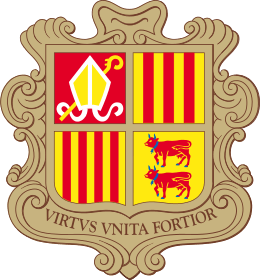 | Country: Andorra | |
| Type: Heraldic achievement | ||
| Link: Coat of arms of Andorra | ||
| Description: Below the shield arms stands Andorra's national motto Virtus Unita Fortior (Latin for United virtue is stronger). The coat of arms also appears on the flag of Andorra. The coat of arms of Andorra consists of the following quarters: First quarter: arms of La Seu d'Urgell, in the Catalan province of Lérida (Spain), second quarter: arms of the former County of Foix, today the French commune of Foix (France), third quarter: arms of the former Crown of Aragon representing Catalonia (Spain), and fourth quarter: arms of the former Viscountcy of Béarn, today a part of the French department of Pyrénées-Atlantiques (France). Especially the third quarter makes a comparison with the arms of Spain worthwhile. The arms of Foix and the arms of Aragon can be distinguished from each other by counting the number of red pales in them: three for Foix and four for Aragon. | ||
 | Country: Angola | |
| Type: Socialist emblem | ||
| Link: Emblem of Angola | ||
| Description: There is heavy Marxist imagery found on the device (as can be seen when comparing with other examples of so-called "socialist heraldry"), expanded from what is found on the national flag. In the centre is a machete and hoe in saltire, representing the revolution through which the nation gained independence, and the importance of agricultural workers, but the tools are also African rather than the Euroasian hammer and sickle. Above both emblems is a five-pointed star like is often found in many socialist images. The star represents progress. The rising sun is the traditional symbol of a new beginning. These emblems are all enclosed within a circle formed by a half cog-wheel that represents the industrial workers, and a half vine of coffee and cotton leaves that represents the coffee and cotton industries respectively; typical for "Socialist heraldry". At the bottom is an open book to represent education. A banner reads "Republic of Angola" in Portuguese. Details of the insignia are laid down in Article 163 of the Constitution of Angola. | ||
 | Country: Antigua and Barbuda | |
| Type: Heraldic achievement | ||
| Link: Coat of arms of Antigua and Barbuda | ||
| Description: The coat of arms of Antigua and Barbuda was officially introduced in 1967. The symbolism of the arms is more complex than that found on the flag of Antigua and Barbuda, but many elements are similar. The crest is a pineapple, a fruit for which the islands are famous. There are several plants found around the shield, all abundant in the country: red hibiscus, sugarcane, and yucca plant. Supporting the shield is a pair of deer representing the wildlife of the islands. The shield shows the sun, also found on the flag, rising from a blue and white sea. The rising sun symbolises a new beginning, and the black background represents the African origins of many of the citizens. At the bottom of the shield, in front of the sea, sits a stylised sugar mill. The arms are typical for former British colonies, using indigenous flora and fauna to create arms in a distinguished British heraldic style; see also e.g. the arms of Australia, the Bahamas, Barbados, Guyana and the Seychelles. | ||
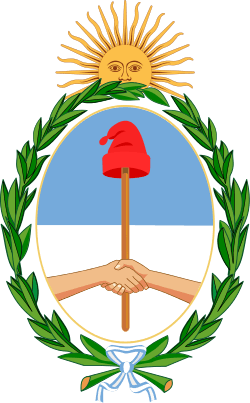 | Country: Argentina | |
| Type: Heraldic achievement | ||
| Link: Coat of arms of Argentina | ||
| Description: The coat of arms of the Argentine Republic[3] was established in its current form in 1944, but has its origins in the seal of the General Constituent Assembly of 1813.[4] The coat of arms has the gold-yellowed Sun of May as its crest, also found on the flag of Argentina. The rising sun symbolizes the rising of Argentina, as described in the first version of the Argentine National Anthem; the rising sun is often found in the symbols of countries having won independence from colonial powers. In the shield are two shaking hands, connoting the unity of the provinces of Argentina. The hands hold a pike, which represents power and willingness to defend freedom, epitomized by the Phrygian cap on the top of the spear; the Phrygian cap is a symbol of republican freedom often found in 19th Century imagery and therefore in many of the Latin American republics which gained independence in those years.[5] The tinctures are the same as the colours of the Argentine flag, the blue symbolizes the sky and the white denotes the Río de la Plata. | ||
 | Country: Armenia | |
| Type: Heraldic achievement | ||
| Link: Coat of arms of Armenia | ||
| Description: The national coat of arms of Armenia have an eagle and a lion as supporters. The current coat of arms was adopted in 1992 by the Armenian Supreme Council decision. The law on the state coat of arms of Armenia was passed by the Armenian Parliament in 2006.
The shield itself consists of many components. In the centre inescutcheon is a depiction of the Mount Ararat with Noah's Ark sitting atop it; Ararat is considered the national symbol of Armenia. Surrounding the inescutcheon with Mount Ararat are symbols of old Armenian dynasties: Artaxiad, Arsacid, Bagratuni and Rubenid. The use of the arms of old ruling dynasties as territorial arms can also be seen e.g. in the greater coat of arms of Sweden. | ||
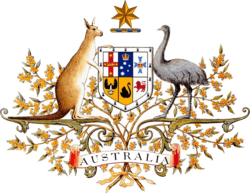 | Country: Australia | |
| Type: Heraldic achievement | ||
| Link: Coat of arms of Australia | ||
| Description: The initial coat of arms was granted by King Edward VII on 7 May 1908, and the current version was granted by King George V on 19 September 1912.
The shield contains the badge (n.b. not the coat of arms) of each Australian state, the whole surrounded by an ermine border representing the federation of the states.[6] The crest is the Commonwealth Star. Creating a shield composed of the arms (or in this case the badges) of the states or provinces making up the country follows the pattern of the royal arms of the United Kingdom and was also done in other dominions, notably the first arms of Canada and the arms of the Union of South Africa. The supporters are a red kangaroo and an emu, from the indigenous fauna of the land; this follow the pattern of many other arms of former British colonies, were indigenous wildlife has been adopted for heraldic achievements, like Antigua and Barbuda, the Bahamas, Barbados, Guyana and the Seychelles. | ||
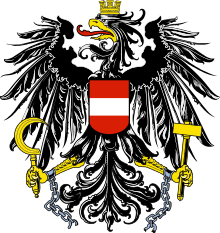 | Country: Austria | |
| Type: Heraldic achievement | ||
| Link: Coat of arms of Austria | ||
| Description: The coat of arms has Medieval background and was used for Centuries by the Habsburg monarchs. The eagle was double-headed until 1918 and originally a symbol of the Holy Roman Emperor. The current armorial achievement of Austria, albeit without the broken chains, has been in use by the Republic of Austria since 1919, except for 1934-1955. The eagle was originally an imperial symbol which over time came to be a German symbol. Austria, as a German-speaking country, has this in common with Germany. While theirs are descended from the Holy Roman Empire, the eagles in the arms of Albania, Romania, Russia and Serbia can find their origin in the Byzantine Empire. | ||
 | Country: Azerbaijan | |
| Type: Islamic emblem | ||
| Link: Coat of arms of Azerbaijan | ||
| Description: The national emblem is the image of an oriental shield and a semicircle formed by the branches of an oak-tree and ears resting on it. The shield contains the image of a fire in the centre of an eight-pointed star against a background of the colours of the National flag of Azerbaijan. This fire symbol is for the many everlasting fires in Azerbaijan which also gives the name "land of eternal fire", but it is also a common Islamic symbol for God. The colours used in composing the emblem are taken from the national flag. The green represents Azerbaijan as an Islamic country. Red represents the development and democracy of Azerbaijan. The blue represents that the Azerbaijanis are one of the Turkic peoples. The star itself stands for the eight branches of the Turkic peoples, and between each point of the star, there is a smaller eight pointed star found. | ||
B
| Display | Comments | Alternate symbol |
|---|---|---|
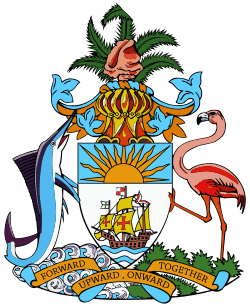 | Country: The Bahamas | |
| Type: Heraldic achievement | ||
| Link: Coat of arms of the Bahamas | ||
| Description: The crest on top of the helm (helmet) is a conch shell, which represents the varied marine life of the island chain. Below the helm is the escutcheon itself, whose main charge is a ship, reputed to represent the Santa María of Christopher Columbus; she is also present in the arms of Trinidad and Tobago. The ship is sailing beneath a sun in the chief. The animals supporting the shield are the national animals, and the national motto is found at the bottom. The flamingo is located upon land, and the marlin upon sea, indicating the geography of the islands; it is common for arms of former British colonies to take local indigenous animals and set them in a heraldic achievement like this, see also e.g. Australia, Antigua and Barbuda, Guyana and the Seychelles. The coat of arms were approved by H.M. Queen Elizabeth II in 1971. It was designed by Bahamian artist and clergyman, Rev. Dr. Hervis L. Bain, Jr., OBE. | ||
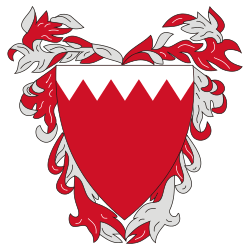 | Country: Bahrain | |
| Type: Heraldic achievement | ||
| Link: Coat of arms of Bahrain | ||
| Description: The current coat of arms of Bahrain were originally designed in 1932 by Charles Belgrave, the British governor and advisor to the then-Sheik of Bahrain. The design has undergone slight modifications since then, namely in 1971 in 2002 when mantling and the indentations of the chief were modified respectively, but the influence of the original design is still clearly visible in the modern blazon. The mantling is displayed around the shield without a helm or torse, in a manner unusual to traditional heraldic practice. The design on the shield is nearly identical to the design of the national flag, the only difference being that the whole of the design is rotated so that the chief of the shield appears as the hoist of the flag. The origin is the red flag with white defacements used by the Trucial States according to a deal with the British Empire in the 19th Century. The same type of symbolism can be seen in the flag and emblem of Qatar and in the flags of the emirates in the United Arab Emirates. | ||
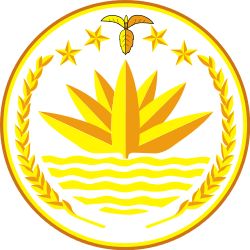 | Country: Bangladesh | |
| Type: Coloured seal | ||
| Link: National Emblem of Bangladesh | ||
| Description: The national emblem of Bangladesh was adopted shortly after independence in 1971. Located on the emblem is a water lily, the country's national flower, and is representative of the many rivers that run through Bangladesh. The four stars represent the four founding principles that were originally enshrined in the first constitution of Bangladesh in 1972: nationalism, secularism, socialism, and democracy. The emblem is not very similar to the national symbol of any other country, even if the seeblatt common in European continental heraldry have the same botanical origin as the flower of the water lily here depicted. | ||
 | Country: Barbados | |
| Type: Heraldic achievement | ||
| Link: Coat of arms of Barbados | ||
| Description: The coat of arms of Barbados was adopted in 1966 by decree of H.M. Queen Elizabeth II. Like other former British possessions in the Caribbean, the coat of arms has a helmet with a national symbol on top (a crest in heraldic terms), and a shield beneath that is supported by two animals. The Arms were designed by Mr. Neville Connell, for many years curator of the Barbados Museum, with artistic assistance by Mrs. Hilda Ince.
The crest for Barbados is the fist of a Barbadian holding two sugar cane stalks that are crossed to resemble a saltire (St. Andrew's Cross). Upon it are a pair of the national flower, the Pride of Barbados, and a single bearded fig tree (Ficus citrifolia). The shield is supported by a dolphin and pelican. They stand for the fishing industry and Pelican Island, respectively. At the bottom is Barbados' national motto ("Pride and Industry") on a scroll. | ||
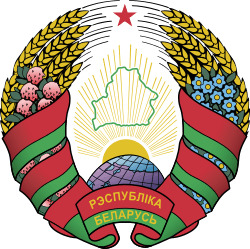 | Country: Belarus | |
| Type: Socialist emblem | ||
| Link: National emblem of Belarus | ||
| Description: The national emblem of Belarus features a ribbon in the colours of the national flag, an outline map of Belarus, wheat ears and a red star. The emblem is an allusion to one that was used by the Byelorussian SSR, designed by Ivan Dubasov in 1950, with the biggest change being a replacement of the hammer and sickle with the map of Belarus. The red star of Communism is however still present. Maps of the country represented are otherwise found in the arms of Kosovo and in the arms of Cameroon.
This emblem replaced the historic pahonia arms in a 1995 referendum. The pahonia arms, used from 1991-1995, was a traditional heraldic achievement showing a knight of silver on a red field. It has a common history with the coat of arms of Lithuania and looks very much like it. | ||
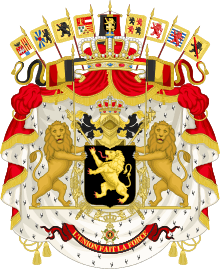 | Country: Belgium | 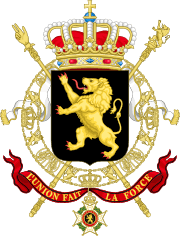 |
| Type: Heraldic achievement | ||
| Link: Coat of arms of Belgium | ||
| Description: The coat of arms of Belgium bears a golden lion, known as Leo Belgicus (Latin: "the Belgian lion"), as its charge. This is in accordance with the Belgian Constitution: The Belgian nation takes red, yellow and black as colours, and as state coat of arms the Belgian lion with the motto UNITY MAKES STRENGTH. A royal decree of 17 March 1837 determines the achievement to be used in the greater and the lesser version, respectively. There is also a middle version of the arms.
The greater arms (pictured to the left) are used only rarely. Above the mantle rise banners with the arms of the nine provinces that constituted Belgium in 1837 – instead of making them part of the shield, like in the arms of the Czech Republic, Romania, Spain and the United Kingdom. They are (from dexter to sinister) Antwerp, West Flanders, East Flanders, Liège, Brabant, Hainaut, Limburg, Luxembourg and Namur. Note Luxembourg – part of historical Luxembourg is a province of Belgium, while the eastern part is the independent Grand Duchy of Luxembourg, bearing the same arms. This can be compared to the arms of Ireland being both the arms of the Republic of Ireland and a field in the arms of the United Kingdom. (Since the province of Brabant was split in 1995, the greater arms no longer reflect the present territorial divisions of the state.) The lesser coat of arms (pictured to the right) are used by the Belgian federal government, on passport covers and the official sites of the monarchy and of the government. | ||
 | Country: Belize | |
| Type: Heraldic achievement | ||
| Link: Coat of arms of Belize | ||
| Description: The coat of arms of Belize was adopted upon independence, and are only slightly different from the arms used when Belize was a British colony, following British heraldic traditions like many other former British colonies.[7] The shield is tierced per pall inverted. Within the shield are the tools of a woodcutter in the upper sections and a ship in the lower one. These are symbolic of the importance of mahogany in the 18th and 19th century Belizean economy.[8] The shield is supported by two wood-cutters of different races. The one on the left is holding an axe, while the one on the right is holding an oar. The compartment has a mahogany tree growing up from it, and the crown of the tree can be seen above the shield. The circular border of the coat is formed by twenty-five leaves. At the bottom is the national motto: SUB UMBRA FLOREO (Under The Shade I Flourish). The whole achievement is encircled by a circle of twenty-five leaves. | ||
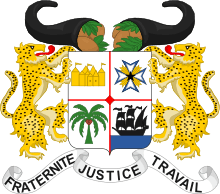 | Country: Benin | |
| Type: Heraldic achievement | ||
| Link: Coat of arms of Benin | ||
| Description: The coat of arms of Benin, originally introduced in 1964, was readopted in 1990 after being replaced in 1975. At the top of the arms is the national crest that consists of two horns with corn in the ear and filled with sand. These are reputed to stand for prosperity. Below the crest is a shield that contains the actual coat of arms of Benin. The shield is quartered. The top dexter field contains a castle in the style of the Somba people, representative of the history of Benin. In the top sinister field is the Star of Benin, the highest award of the nation. Below this is a ship, that stands for the arrival of Europeans in Benin. In the lower dexter field is a palm tree. The shield is supported by a pair of natural leopards (not to be confused with heraldic leopards), the national animal of Benin. Below the shield is the motto of Benin (Fellowship, Justice, Work) in French.
From 1975-1990, Benin used a national emblem of the socialist type, with a red star on green. | ||
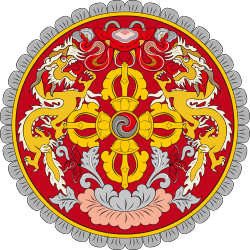 | Country: Bhutan | |
| Type: East Asian emblem | ||
| Link: Emblem of Bhutan | ||
| Description: The emblem of Bhutan (called རྒྱལ་ཡོངས་ལས་རྟགས་;Wylie: rgyal-yongs las-rtags in the local Dzongkha language) maintains several elements of the flag of Bhutan, with slightly different artistry, and contains much Buddhist symbolism. The official description is as follows: "The national emblem, contained in a circle, is composed of a double diamond-thunderbolt (dorje) placed above a lotus, surmounted by a jewel and framed by two dragons. The thunderbolt represents the harmony between secular and religious power. The lotus symbolizes purity; the jewel expresses sovereign power; and the two dragons, male and female, stand for the name of the country which they proclaim with their great voice, the thunder." A dragon was used as a national symbol by the Empire of China too. The symbol is an example of East Asian symbolism, comparable albeit more elaborate than the symbols of Japan and South Korea. See also the symbols of Burma, Cambodia and Thailand. | ||
 | Country: Bolivia | |
| Type: Heraldic achievement | ||
| Link: Coat of arms of Bolivia | ||
| Description: The central cartouche has a bordure with ten stars in the bottom, which symbolize the nine Departamentos and the former province Litoral that was taken over by Chile in 1879, and the name of Bolivia in the top section. To have a text on a bordure is common in Iberian and Latin American heraldry. The alpaca in the shield is the national animal, and the items next to it are symbolic of the resources of the nation. An Andean condor sits on top of the shield as a crest. Around the shield there are three Bolivian flags on each side; flags draped like this are also used in the arms of Colombia, Ecuador, Panama, and Peru. Behind these are two pairs of crossed rifles that symbolize the struggle for independence. Next to the muskets there are an axe and a red Phrygian cap, often used to symbolize republican freedom in the 19th Century and therefore used in many arms of republics in Latin America, which gained their independence in that century. | ||
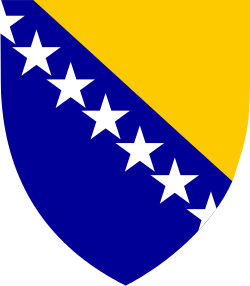 | Country: Bosnia and Herzegovina | |
| Type: Heraldic achievement | ||
| Link: Coat of arms of Bosnia and Herzegovina | ||
| Description: The coat of arms were adopted in 1998, replacing the previous design that had been in use since 1992 when Bosnia and Herzegovina gained independence from Yugoslavia. It follows the design of the national flag. The three pointed shield is used to symbolize the three major ethnic groups of Bosnia, as well as allude to the shape of the country. The present arms are inspired by the Flag of Europe, just like the arms of Kosovo, another former Yugoslav state which like Bosnia and Herzegovina has tried to find neutral symbols to please different ethnic groups within the country.
The arms were adopted to replace the arms with fleurs-de-lis, arms which were based on armorial bearings of the Kingdom of Bosnia from the Middle Ages. Totally different arms were also used before the First World War when Bosnia and Herzegovina were part of Austria-Hungary and yet another emblem was used during the Communist regime in the Yugoslav era. | ||
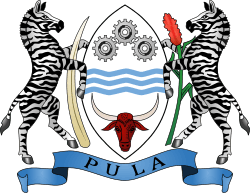 | Country: Botswana | |
| Type: Heraldic achievement | ||
| Link: Coat of arms of Botswana | ||
| Description: The coat of arms were adopted in 1966. The shape of the shield is that of traditional shields found in East Africa; the same shape is used by Kenya, Tanzania, and Uganda. On the top portion of the shield are three cogwheels that represent industry, a common heraldic charge for this. The three waves symbolize water, and also alludes to the national motto: "Pula", which means simply "rain", but also good luck. The motto is found on a blue banner below the shield. At the bottom of the shield is the head of a bull, for the importance of cattle herding to Botswana. The zebra supporters are an important part of Botswana's wildlife; one zebra holds an ear of sorghum, the other a tusk of ivory.[9] Just like many other former British colonies, Botswana has made typical local wildlife and plants into heraldic charges. | ||
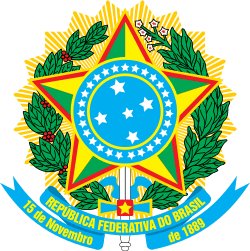 | Country: Brazil | .svg.png) |
| Type: Heraldic achievement/coloured seal | ||
| Link: Coat of arms of Brazil, National Seal of Brazil | ||
| Description: The coat of arms were created on November 19, 1889, four days after Brazil became a republic. They do not look like traditional arms, but according to the blazon, it is a round shield placed upon a five-pointed star. In the blue shield, the Southern Cross can be seen. The ring of 27 stars around it represents Brazil's 26 states and the Federal District. The shield is surrounded by coffee (at the left) and tobacco (at the right) branches, which were important crops in Brazil at that time. The blue ribbon contains the official name of Brazil ("República Federativa do Brasil" — Portuguese for "Federative Republic of Brazil") and the date of the federative republic's establishment (November 15, 1889). The use of stars to represent the states of the federation is inspired by the flag of the United States of America.
In some circumstances, the National Seal of Brazil is used to represent the country in stead of the coat of arms. The first arms of Brazil was granted in 1500, when Brazil was a Portuguese colony. Other arms were also used during the Brazilian monarchy 1822-1889. | ||
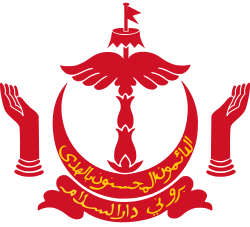 | Country: Brunei | |
| Type: Islamic emblem | ||
| Link: Emblem of Brunei | ||
| Description: The emblem was adopted in 1940. There are five main components to the national emblem, according to the government's official website. They are the flag, the royal umbrella, the wing, the hands, and the crescent. On the crescent is writing in Arabic script that contain the national motto of: "Always in service with God's guidance". Below this is a banner with the name of the nation in Arabic script as "Brunei Darussalam", i.e. "Brunei, the Abode of Peace". The crescent and the hands are typical Muslim symbols, a crescent is also present in the symbols of Muslim states such as Algeria, Mauretania and Singapore. The umbrella is a South East Asian symbol of royalty, an umbrella like this can also be seen in the arms of Cambodia. | ||
 | Country: Bulgaria | .svg.png) |
| Type: Heraldic achievement | ||
| Link: Coat of arms of Bulgaria | ||
| Description: The coat of arms of were adopted in 1997, and have a crowned golden lion rampant in a red shield. The lion is a common heraldic beast throughout Europe, different arms using it in different tinctures (heraldic colours). Above the shield is the Bulgarian historical crown — a royal crown, even if Bulgaria is now a republic – the same re-adoption of royal insignia, heraldically denoting a monarchy, can be seen in the arms of other formerly Communist European republics: Hungary and Serbia. The shield is supported by two crowned lions and below the shield is a compartment in the shape of oak twigs and white bands with the national motto "Unity makes strength" inscribed on them. The lesser arms (shown to the right) are used on some government and public buildings, and documents issued from the state. | ||
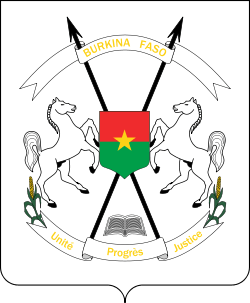 | Country: Burkina Faso | |
| Type: Heraldic achievement | ||
| Link: Coat of arms of Burkina Faso | ||
| Description: The coat of arms of Burkina Faso, adopted in 1997, contains an inescutcheon (shield in the shield) based on the national flag. Above the inescutcheon the name of the country is shown, while below it is the national motto, Unité, Progrès, Justice (French for "Unity, Progress, Justice"). The supporters are two white stallions. The supporters and other insignia in the outer shield is similar to what was used for the old Upper Volta coat of arms (before the country changed its names in 1984), with the Burkina Faso flag pattern replacing the Upper Volta flag pattern and letters in the inescutcheon. | ||
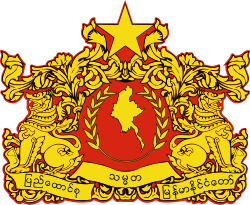 | Country: Burma | |
| Type: East Asian emblem | ||
| Link: State Seal of Burma | ||
| Description: In 2008 a new constitution for Burma was adopted in a referendum. In the new constitution, changes have been made to the state emblem, which is mostly based on traditional East Asian symbolism (comparable to the symbols of Bhutan and Thailand) but may also have been inspired by heraldry (like in the arms of Cambodia). The new emblem lost the colours blue and dark gold/orange and instead just uses the colours red and gold/yellow. While sticking to the same basic pattern as before, the cogwheel of the former emblem has been removed and replaced with laurel or olive branches, probably for a want to move away from Socialist symbolism, even if cogwheels are also used in traditional heraldry (see e.g. Botswana). The words on the central portion of the scroll have also been changed.[10] | ||
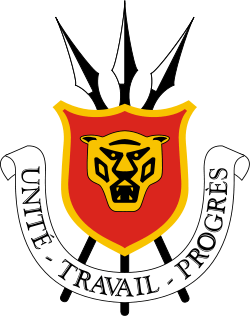 | Country: Burundi | |
| Type: Heraldic achievement | ||
| Link: Coat of arms of Burundi | ||
| Description: The coat of arms was adopted in 1966, when Burundi was made a republic. The charge of the coat of arms is the head of a lion guardant, a common heraldic charge but also indigenous to this part of Africa. Behind the shield there are three crossed traditional African spears, like the ones used also by many neighbouring states like D.R. of the Congo and Kenya. Under the shield the national motto of Burundi appears on a scroll: Unité, Travail, Progrès (French, "Unity, Work, Progress").[11] The previous coat of arms, adopted in 1962, had an heraldically identical shield but had another motto and symbols of the monarchy.[12] | ||
C
| Display | Comments | Alternate symbol |
|---|---|---|
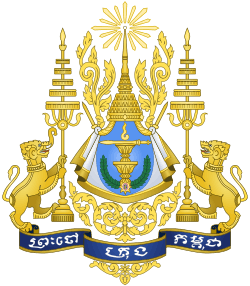 | Country: Cambodia | |
| Type: Heraldic achievement | ||
| Link: Royal Arms of Cambodia | ||
| Description: The royal coat of arms is the symbol of the Cambodian monarchy. They have existed in some form close to the one depicted since the establishment of the independent Kingdom of Cambodia in 1953, but was replaced during the different republican regimes of 1970-1993. The achievement is heraldic but also inspired by traditional East Asian symbolism. On a blue escutcheon (shield) is an unalome sign (Khmer-Thai version of the om symbol) atop a sacred sword, which rests on two stacked phan (pedestalled platters). The Cambodian royal crown is placed on top of the escutcheon, in the manner usual to the heraldic achievements of monarchies around the world. The supporters are a gajasimha (a lion with an elephant trunk) on the dexter side, and a rajasingha (a royal lion), on the sinister side, which are both carrying royal umbrellas in the South East Asian style, similar to the one in the national emblem of Brunei. | ||
 | Country: Cameroon | |
| Type: Heraldic achievement | ||
| Link: Coat of arms of Cameroon | ||
| Description: The shield has the same colour pattern as the flag of Cameroon, and in the center is a map of the nation, upon which scales of justice are superimposed. Maps of the armigerous territory are not common in heraldry, some might even say it is unheraldic, but it exist also in the arms of Kosovo and in the national emblem of Belarus. Behind the shield are two crossed fasceses; the fasces is an ancient Roman symbol of the power of the state and is also used as a symbol by France, the former colonial power of Cameroon. The banner at the bottom gives the name of the nation in French and English. The top banner contains the national motto: Paix, Travail, Patrie.[13] | ||
 | Country: Canada |
|
| Type: Heraldic achievement | ||
| Link: Coat of arms of Canada | ||
| Description: These arms are formally known as the Arms of Her Majesty The Queen in Right of Canada,[14][15][16][17][18] and are, since 1921, the official coat of arms of the Canadian monarch and thus also of Canada.[18] It is closely modelled after the royal coat of arms of the United Kingdom with distinctive Canadian elements replacing or added to those derived from the British. The maple leaves in the shield, blazoned "proper", were originally drawn vert (green) but were redrawn gules (red) in 1957 and a circlet of the Order of Canada was added to the arms for limited use in 1987. In 1931, with the passage of the Statute of Westminster, Canada and other dominions became politically independent from the United Kingdom. This had the effect of elevating the Canadian coat of arms which had been granted as deputed arms for particular uses in a colony, to the status of the Royal Arms of the King in right of the country, for general purposes throughout the country.[19] The original coat of arms of Canada had quarters representing the provinces (like in the arms of Australia), but as the number of provinces grew, it was thought the arms would be too cluttered if all of them would be present, so they were replaced by the present shield, thus instead high-lighting Canada as a country grewn out of the United Kingdom and France. The arms for France is the old arms from the monarchy, used when Quebec belonged to France. In our time, France does not use heraldic arms. | ||
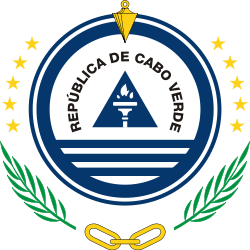 | Country: Cape Verde | |
| Type: Coloured seal | ||
| Link: National emblem of Cape Verde | ||
| Description: The national emblem of Cape Verde contains a circle within which is written the name of the nation in Portuguese; also in this circle are a torch and triangle, symbols of freedom and national unity. The circle is ringed with ten stars, that represent the islands of Cape Verde, and is similar to the symbolism on the flag of Cape Verde.
In 1992, this emblem replaced the earlier variant with a seashell that had been in use since independence from Portugal in 1975 and was very closely related to the emblem of Guinea-Bissau; there was a movement to join the two countries. Before independence, Cape Verde had a heraldic achievement. | ||
 | Country: Central African Republic | |
| Type: Heraldic achievement | ||
| Link: Coat of arms of the Central African Republic | ||
| Description: The motto ZO KWE ZO is Sango for "A man is a man" or "All people are people". The elephant and the baobab tree in the top fields of the shield represent nature as the backbone of the country, a form of heraldic charges used in many African national arms. The gold star on a map of Africa symbolizes the position of the Central African Republic. The bottom dexter quarter holds three diamonds, which symbolize the mineral resources of the country. The hand (bottom sinister quarter) was the symbol of the dominant MESAN party in 1963 when the arms were adopted;[20] political symbols are not uncommon in heraldry and may sometimes be there even after the party they stand for has lost power. | ||
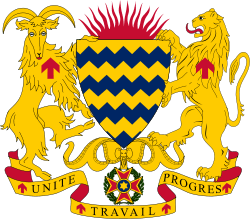 | Country: Chad | |
| Type: Heraldic achievement | ||
| Link: Coat of arms of Chad | ||
| Description: The lines on the shield are representative of Lake Chad. Simple heraldic devices representing some prominent feature of the nature of the country like this, also can be seen in the arms of Nigeria and Zambia. The crest in form of a rising sun above the shield represents a new beginning (like e.g. also in the arms of Argentina). The goat supporter represents the northern part of the nation, while the southern part is represented by the lion supporter.
There also exists a separate state seal or emblem of Chad, which has a black-and-white design consisting of a circle with the words "République du Tchad – Unité, Travail, Progrès" surrounding a depiction of the head and upper body of a tribal girl with her hair in cornrows.[21] | ||
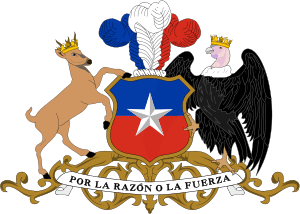 | Country: Chile | |
| Type: Heraldic achievement | ||
| Link: Coat of arms of Chile | ||
| Description: The coat of arms of Chile dates from 1834 and was designed by the English artist Charles Wood Taylor, based on the flag which in turn was inspired by the US Stars and Stripes. It is made up by a field divided per fess (horizontally) in two equal parts: the top one is blue and the bottom, red. A five pointed white star is in the centre of the shield. This shield is supported on the dexter side by a huemul, a singular and rare mammal of the Chilean territory and on the sinister side by a condor, the most significant bird of prey from the Andes and present in many South American arms. Both animals have on their heads the golden naval crown, symbol of the heroic deeds of the Chilean Navy in the Pacific Ocean. The coat of arms is crowned by a three feathered crest; each feather bearing one colour: blue, white and red. This crest was a symbol of distinction that former Presidents of the Republic used to wear on their hats. Underneath the coat of arms and on the ellaborated compartment, there is a white band with the motto: "Por la Razón o la Fuerza" (By reason or force). | ||
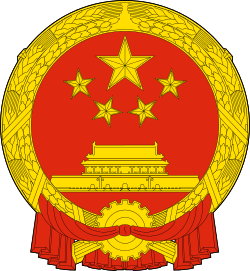 | Country: China | 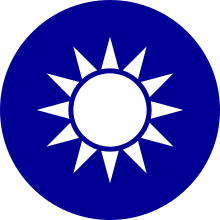 |
| Type: Socialist emblem/East Asian symbol | ||
| Link: National Emblem of the People's Republic of China/National Emblem of the Republic of China | ||
| Description: The national emblem of the People's Republic of China (shown to the left) contains in a red circle a representation of Tiananmen Gate, the entrance gate to the Forbidden City, the old centre of Chinese state power where Mao declared the foundation of the People's Republic of China (PRC) in 1949. Above this representation are the five stars found on the national flag. The largest star represents the Communist Party of China, while the four smaller stars represent the four social classes as defined in Maoism. The emblem is described as being "composed of patterns of the national flag"[22] The colours red and gold, the stars and the circular surrounding garbs show the emblem belongs to the family of Socialist national emblems.
While the People's Republic of China claims the island of Taiwan, the Republic of China residing there claims all of China. None of the regimes are universally recognised by all other states around the world. The Blue Sky with a White Sun (shown to the right) serves as the design for the party flag and emblem of the Kuomintang (KMT), the canton of the flag of the Republic of China, the national emblem of the Republic of China (ROC), and as the naval jack of the ROC Navy. In the Blue Sky with a White Sun symbol, the twelve rays of the white Sun representing the twelve months and the twelve traditional Chinese hours, each of which corresponds to two modern hours and symbolizes the spirit of progress. The Blue Sky with a White Sun flag was originally designed by Lu Haodong, a "martyr" of the Republican revolution. He presented his design to represent the revolutionary army in 1895. The circular form in this emblem is more related to other symbols of East Asia, like the mon of Japan and the emblem of Bhutan. | ||
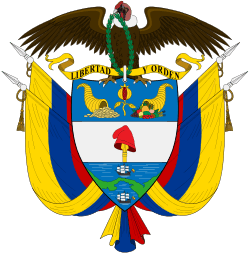 | Country: Colombia | |
| Type: Heraldic achievement | ||
| Link: Coat of arms of Colombia | ||
| Description: The national flag is draped on each side of the shield, like in the arms of neighbouring Ecuador, Peru and Panama. In the lowermost field of the shield is a depiction of ships, pointing to the maritime history of Colombia, namely to the Isthmus of Panama, which was part of Colombia until 1903; Costa Rica, El Salvador and Panama use similar symbols. In the middle section, in a field of silver (argent), the Phrygian cap is presented; this being a traditional symbol of liberty and freedom and is common in many of the republics of Latin America as it was particularly common as a symbol of republics in the 19th Century when they received their independence. The topmost section contains a pomegranate over a blue (azure) field, as a symbol of the Viceroyalty of New Granada (early colonial name of Colombia back in the 18th century), in the middle flanked by two cornucopias or horns of plenty. This portion represents the agricultural and mineral wealth of Colombian soil. A pomegranate is also present in the arms of Spain, representing Granada. The coat of arms of the republic was designed by Francisco de Paula Santander, and was adopted in 1834, with later non-essential modifications made in 1924. | ||
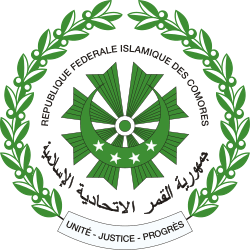 | Country: Comoros | |
| Type: Coloured seal | ||
| Link: National seal of the Union of the Comoros | ||
| Description: The national seal of the Comoros has the crescent found on the national flag in the center; within this crescent are the four stars found on the flag. The crescent is a common symbol for Muslim countries, found also with Algeria, Brunei, Singapore and Tunisia. A sun with rays extended is right above the crescent. Around the focal point, the name of the nation (Union of the Comoros) is written in both French and Arabic; names are commonly written like this in seals. The border is composed of two olive branches, with the national motto at the bottom in French. | ||
 | Country: Congo, Democratic Republic of the | |
| Type: no specific type | ||
| Link: Emblem of the Democratic Republic of the Congo | ||
| Description: The symbol of the Democratic Republic of the Congo has changed several times. The current one was introduced in 2006 but is based on earlier symbols and coats of arms. It depicts a natural leopard head, an animal indigenous to the country. This is surrounded by an elephant tusk to the left and a spear to the right. Elephant tusks and spears are very common in African national symbols, like with Burundi, Uganda, Tanzania etc. Below are the three words which make up the national motto: Justice, Paix, Travail (Justice, Peace, Work in French). It was adopted on February 18, 2006 by President Joseph Kabila. The emblem is described in detail in Section 1, Article 1 of the 2005 constitution.[23] | ||
 | Country: Congo, Republic of the | |
| Type: Heraldic achievement | ||
| Link: Coat of arms of the Republic of the Congo | ||
| Description: The coat of arms of the Republic of the Congo has a shield with a rampant red lion holding a torch. The lion is indigenous to Africa but is displayed in the traditional heraldic form so common around the world. The background color of the shield is gold with a horizontal green wavy stripe in the middle, for the River Congo; a similar symbol for the river was actually used in neighbouring Democratic Republic of the Congo when it was a Belgian colony, together with the Belgian heraldic lion. A golden crown sits above the shield. Two large African elephants support the shield; Swasiland also use an elephant as a supporter, while Côte dÍvoire use an elephant's head as charge. These arms were adopted in 1960 and readopted in 1991 after having been replaced with a simpler, unheraldic symbol from 1970–1991. | ||
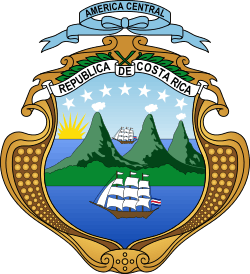 | Country: Costa Rica | |
| Type: Heraldic achievement | ||
| Link: Coat of arms of Costa Rica | ||
| Description: The basis of the current National Coat of Arms of Costa Rica was adopted September 29, 1848 during the presidency of Dr Jose Maria Castro Madriz together with the new flag. Both designs are attributed to Pacifica Fernandez, wife of Mr Castro Madriz. These arms were significantly modified in 1906 which eliminated the military symbols, national flags and horn of plenty contained in the 1848 design.[24] In 1964 two stars were added to the original five in order to complete seven, which by then was the number of provinces of the country.[24] On May 5, 1998, by Executive Decree No. 26853-SP, the coat of arms was given its current form, including the smoking volcanoes. Before this date, the three mountains did not show smoke coming out of their tops.[25] As officially described the coat of arms represent: three volcanoes (one for each of the three mountain ranges in the country) and an extensive valley between two oceans (Pacific Ocean and Caribbean) with a merchant ship in each one (representing the maritime history of the country). In the horizon a rising sun. All are surrounded by a golden frame with golden beads (coffee). Two palms close the arms joined by a white ribbon with the motto "República de Costa Rica" in gold. An arch of seven stars represent the provinces of the republic. The arms are crowned by a blue ribbon with the motto "America Central".[25] The whole symbol can be easily compared to symbols in the arms of Colombia, El Salvador and Panama, also representing the istmus. | ||
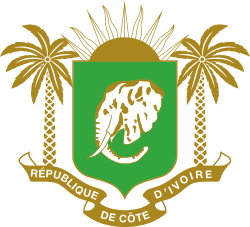 | Country: Côte d'Ivoire | |
| Type: Heraldic achievement | ||
| Link: Coat of arms of Côte d'Ivoire | ||
| Description: The coat of arms of Ivory Coast in its current form was adopted in 1964. The focal point of the emblem is the head of an elephant. The elephant is symbolically important to the nation, since it is the largest animal found in Côte d'Ivoire as well as being the source of ivory for which the nation is named. The rising sun is a traditional symbol of a new beginning. Below the elephant head is a banner containing the name of the nation. | ||
 | Country: Croatia | |
| Type: Heraldic achievement | ||
| Link: Coat of arms of Croatia | ||
| Description: The coat of arms of Croatia consists of one main shield and five smaller shields which form a crown over the main shield. The main coat of arms is a checkerboard (chequy) that consists of 13 red and 12 silver (white) fields. It's also informally known in Croatian as šahovnica ("chessboard"). The five smaller shields represent five different historical regions within Croatia, from dexter to sinister: Central Croatia, Dubrovnik region, Dalmatia, Istria and Slavonia. The current arms were adopted in 1990, based on much older arms. The crown devised from arms like this is not common in heraldry. More usually, the arms would be put in different fields in a shield like e.g. in the greater arms of the Czech Reopublic, the arms of Spain or the arms of the United Kingdom, but this solution can be compared to the flags in the greater arms of Belgium. | ||
 | Country: Cuba | |
| Type: Heraldic achievement | ||
| Link: Coat of arms of Cuba | ||
| Description: The shield is divided into three parts: In the chief, a key charging a blue sea between two rocks, symbolizing Cuba’s geographical position between Florida and the Yucatán Peninsula. A bright rising sun in the background symbolizes the rising of the new republic. A key is a symbol of Cuba as Cuba is the key to the Americas. In dexter are the stripes of the flag of Cuba. In sinister is a common Cuban landscape, a royal palm tree, a symbol of Cuba with mountains in the background. A Phrygian Cap or liberty cap is located at the top, as a crown symbolizing liberty (the Phrygian Cap is common as a symbol among Latin American republics), with a sole star on it standing for independence. The cap sits on top of a fasces which is placed behind the shield; the fasces is an old Roman symbol of state authority, also used e.g. by France. | ||
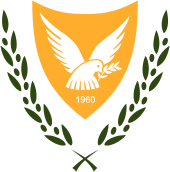 | Country: Cyprus | |
| Type: Heraldic achievement | ||
| Link: Coats of arms of Cyprus | ||
| Description: The coat of arms of the Republic of Cyprus depicts a dove carrying an olive branch (a well-known symbol of peace) over “1960”, the year of Cypriot independence from British rule. The background is blazoned as or (golden) but is depicted as a copper-yellow colour; this symbolises the large deposits of copper ore on Cyprus (chiefly in the form of chalcopyrite, which is yellow in colour). The dove might be interpreted as argent (silver) which would be a breach of the heraldic rule of tincture, but it is actually blazoned as proper and is therefore not breaking the rule.
The Republic of Northern Cyprus is using similar arms. | ||
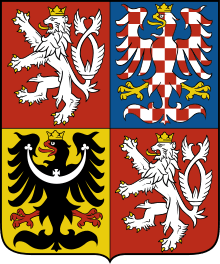 | Country: Czech Republic | 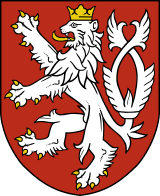 |
| Type: Heraldic achievement | ||
| Link: Coat of arms of the Czech Republic | ||
| Description: The greater coat of arms of the Czech Republic (shown to the right) displays the three historical regions — the Czech lands — which make up the nation: Bohemia, Moravia and Silesia. The arms of Bohemia show a silver double-tailed lion on a red background; this lion is called the Bohemian lion. The Moravian red-and-silver chequered eagle is shown on a blue background. In the days of the Habsburg Monarchy until 1918, the Moravian Eagle was chequered in the red-and-gold tinctures of the Habsburg dynasty. The arms of Silesia are a black eagle with the so-called "clover stalk" on her breast on a golden background, although only a small south-eastern part (Czech Silesia) of the historical region belongs to the Czech Republic; it's like in the arms of the United Kingdom, where the arms of Ireland represent the part of Ireland belonging to the UK. The arms of Bohemia is in itself also the smaller coat of arms of the Czech Republic (shown to the left). The history of the Bohemian lion dates back to the 13th century, and the arms of the other lands are also Medieval in origin. The current arms were adopted after the dissolution of Czechoslovakia in 1992. | ||
D
| Display | Comments | Alternate symbol |
|---|---|---|
 | Country: Denmark | |
| Type: Heraldic Achievement | ||
| Link: Coat of arms of Denmark | ||
| Description: The national coat of arms of Denmark (Danish: Danmarks rigsvåben) consists of three crowned blue lions accompanied by nine red hearts, all in a golden shield. The oldest known depiction of the insignia dates from a seal used by King Canute VI c. 1194. The oldest documentation for the colours dates from c. 1270. Historically, the lions faced the viewer and the number of hearts was not regulated and could be much higher. Historians believe that the hearts originally were a representation of waterlily flowers (Danish: søblade literally "lake leaves") but that this meaning was lost early due to worn and crudely made signets used during the Middle Ages. A royal decree of 1972 specifies these figures as søblade but Danes normally refer to them as hearts. The same heart-shaped figures can be found on several flags from the north of the Netherlands where they can still be recognized as water lily leaves. The current version was adopted in 1819 during the reign of King Frederick VI who fixed the number of hearts to nine and decreed that the heraldic beasts were lions, consequently facing forward. A rare version exists from the reign of king Eric of Pomerania in which the three lions jointly hold the Danish banner, in a similar fashion as in the coat of arms of the former South Jutland County. Until c. 1960, Denmark used both a "small" and a "large" coat of arms, similar to the system still used in Sweden. The latter symbol held wide use within the government administration, e.g., by the Foreign Ministry. Since this time, the latter symbol has been classified as the coat of arms of the royal family, leaving Denmark with only one national coat of arms, used for all official purposes. | ||
 | Country: Djibouti | |
| Type: no specific type | ||
| Link: Emblem of Djibouti | ||
| Description: The national emblem of Djibouti was introduced after attaining independence from France on 27 June 1977. It is bordered on the sides with laurel branches. Within this perimeter there is a vertical spear, in front of which is a shield. Underneath the shield, two hands rise away from the spear, both of which carry a large machete. These two hands symbolize the main two ethnic groups of the nation: the Afar and the Somali. The spear is topped by a red star. The star symbolizes the unity between the Somali and the Afar peoples. A Djibouti law established the seal and states its significance, and has been translated into English. | ||
| Country: Dominica | ||
| Type: British heraldry | ||
| Link: Coat of arms of Dominica | ||
| Description: The coat of arms of Dominica was adopted on July 21, 1961. It consists of a shield with two guardian Sisserou Parrots bracing the shield atop of which is a raging lion. The quadrants of the shield depict a canoe, a banana tree, a palm and a frog of the native species known as the mountain chicken. Below the shield is the national motto: Après Bondie C'est La Ter (After God the Earth). | ||
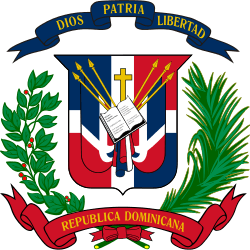 | Country: Dominican Republic | |
| Type: Heraldic Achievement | ||
| Link: Coat of arms of the Dominican Republic | ||
| Description: The coat of arms of the Dominican Republic features a shield in similarly quartered colors as the flag, supported by a bay laurel branch (left) and a palm frond (right); above the shield, a blue ribbon displays the national motto: Dios, Patria, Libertad (God, Fatherland, Liberty). Below the shield, the words República Dominicana appear on a red ribbon. In the center of the shield, flanked by six spears (three on each side), the front four holding Dominican banners, is a Bible with a small golden cross above it, which is opened (according to popular belief) to the Gospel of John, 8:32, which reads Y la verdad os hará libre (And the truth shall make you free).The coat of arms appears in the center of the flag of the Dominican Republic. | ||
E
| Display | Comments | Alternate symbol |
|---|---|---|
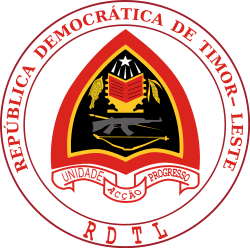 | Country: East Timor | |
| Type: Heraldic Achievement | ||
| Link: Coat of arms of East Timor | ||
| Description: On the center of the coat of arms, there a curved pyramid with red edges and black core, symbolize Mount Ramelau, the highest peak in Timor Leste. On the black field in the center there is a five-pointed star with five rays of light. Under it there is an open red book rest upon a yellow industrial gear. On the left side there is a rice ear (hare fulin) and on the right side there is a corn ear (batar fulin). Under the industrial gear there is an AK-47 assault rifle, bow and arrows (rama inan). Under the Mount Ramelau there is a ribbon banner written in Portuguese: "Unidade, Acção, Progresso" ("Union, Action, Progress"). Around the emblem there is a circle band written with the official name of the state in Portuguese: "República Democrática de Timor-Leste" (Democratic Republic of East Timor), and the acronym is written under "RDTL". | ||
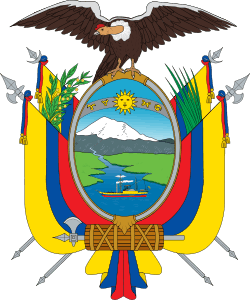 | Country: Ecuador | |
| Type: Heraldic Achievement | ||
| Link: Coat of arms of Ecuador | ||
| Description: In the background of the oval shield is the mount Chimborazo, while the river originating from its base represents the Guayas. They both symbolize the beauty and wealth of the respective regions (Sierra or Costa). The ship on the river is named Guayas as well. In 1841 it was built in Guayaquil and was the first riverine steamship built on the South American west coast. Instead of a mast it features a Caduceus representing trade and economy. On top a golden sun surrounded by the astrological signs for Aries, Taurus, Gemini and Cancer representing the months March to July to symbolize the duration of the March Revolution of 1845.
The condor on top of the shield stretches his wings to symbolize power, greatness and strength of Ecuador. The shield is flanked by four flags of Ecuador. The laurel on the left represents the victories of the republic. The palm leaf on the right side is a symbol of the martyrs of the fight for independence and liberty. The Fasces below the shield represents the republican dignity. | ||
.svg.png) | Country: Egypt | |
| Type: Colored Seal/Arab Seal | ||
| Link: Coat of arms of Egypt | ||
| Description: The "Eagle of Saladin" holds a scroll on which the name of the state appears in Arabic script, Gumhūriyyat Miṣr al-ʿArabiyyah ("Arab Republic of Egypt"). The eagle carries on its breast a shield with the flag's colors — but with a vertical instead of a horizontal configuration. When appearing on the national flag, the eagle is rendered entirely in gold and white. During the union with Syria in the United Arab Republic (1958–1961), and in the ten years afterwards when Egypt retained the union's official name, the two green stars of the union's flag appeared in the white band of the eagle's shield. Between 1972–1984 the eagle was replaced by the golden Hawk of Quraish, as part of the symbolism of the Federation of Arab Republics.
The eagle as a symbol of Saladin is disputed by archeologists. The symbol of an eagle was found on the west wall of the Cairo Citadel (constructed by Saladin), and so is assumed by many to be his personal symbol. There is, however, little proof to defend this. It was subsequently adopted as a symbol of Arab nationalism by Iraq, Palestine, and Yemen (and formerly by Libya). | ||
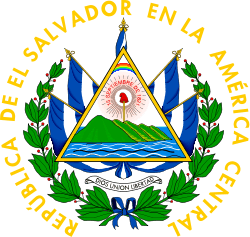 | Country: El Salvador | |
| Type: Heraldic Achievement | ||
| Link: Coat of arms of El Salvador | ||
| Description: The coat of arms of El Salvador has Medieval Gothic influences, fashions and mannerisms, as well as geographical, biblical, and Native American Indigenous symbolic representations, all which come together in an aesthetic stylized elegant shield design. Its center consists of a golden Amber (color) triangle, in which five proud velvet green coned volcanoes rise out of the massive blue pacific ocean swells, they symbolize the fellowship of the five member states of the United Provinces of Central America. Above the volcanoes is a crimson red Phrygian cap on a staff before a golden Amber (color) sun with spiraling swirling rays, with a bright and brilliant volcanic sky, and the date 15 September 1821, Independence Day of El Salvador, in black letters. Over it is an iridescent rainbow which biblically symbolizes peace.
Behind the coat of arms there are five cobalt blue and white striped flags representing the flags of the Federal Republic of Central America, one flag is risen straight up behind and over the triangle, hanging loosely around the spear, and the other four flags are risen half way and stretch out far like wings from behind the triangle sides, two on each side, one over another, the flags hang loosely on their sides, creating almost a horn-like effect with their ends being tied up behind the triangle's bottom. All of thee five flags are each held up and raised with Native American Indigenous war spears with obsidian Projectile points, symbolizing El Salvador's American Indigenous ancestry and heritage, the spears also are a reference of the Lenca and Pipil warriors, who defeated the first European Spanish conquest in this Mesoamerican region. Spanish conquistador Pedro de Alvarado wrote he was awestruck and spooked in great fear when he saw the massive numbers of American Indigenous military warriors with large spears and bow arrows as their weaponry standing their ground in their battle against the invading Spaniards. The Native Indigenous shock troops made an unexpected decisive shock and awe military attack on the Spaniards who fled from this strong Indigenous resistance. The Lencas of El Salvador were led by their mighty Warrior Princess Antu Silan Ulap who made a Guanacasco (botherhood fellowship) with chief Lempira of Honduras, against the Spanish. The nickname Guanaco which means (brother) in Lenca language is coined to present day Salvadorans. The Pipil were led by their Warrior Prince, who defended the Cuzcatan nation. The spears in the coat of arms of El Salvador are a representation of the nation's indigenous heroes and spirit. Under the triangle, there is a golden Amber (color) scroll which states the national motto of El Salvador: Dios, Unión, Libertad (Span., "God, Union, Liberty") in black letters. All of this is surrounded by a green Laurel wreath, which is tied together with a cobalt blue and white striped ribbon of the national flag. The laurel wreath is divided into 14 different parts, which symbolize the 14 Departaments, the Salvadoran subnational administrative units. All this is surrounded by golden Amber (color) letters, which form the Spanish words REPÚBLICA DE EL SALVADOR EN LA AMÉRICA CENTRAL (English: Republic of El Salvador in Central America). For special occasions the whole entire coat of arms of El Salvador is stylized in amber gold color with a white or royal cobalt blue background. The coat of arms of El Salvador is also recognizable in silhouette. | ||
 | Country: Equatorial Guinea | |
| Type: Heraldic Achievement | ||
| Link: Coat of arms of Equatorial Guinea | ||
| Description: This coat of arms shows a grey shield, which contains a tree. This tree is a silk cotton tree, or so-called "God tree". This is where the first treaty was signed between Spain and the local ruler. Over the shield, there are six six-pointed stars. They stand for the mainland and the five main islands.
Underneath the shield is the national motto of Equatorial Guinea, Unidad, Paz, Justicia ("Unity, Peace, Justice"). The motto was adopted in 1968. During the dictatorship of Francisco Nguema (1972–79) the arms and motto were changed, a combination of different tools and swords with a cock over all, and motto on two stripes, in the middle of the arms Trabajo (work), and below Unidad, Paz, Justicia, but the original 1968 coat of arms' motto was restored afterward. | ||
.svg.png) | Country: Eritrea | |
| Type: Colored Seal | ||
| Link: Emblem of Eritrea | ||
| Description: he modern emblem of Eritrea was adopted 24 May 1993, the date of the declaration of independence from Ethiopia. It shows a scene of a dromedary camel in the desert, which is surrounded by an olive wreath. The camel was the beast of burden used during the war of independence from Ethiopia to transport supplies and goods, and was seen as being instrumental to the movement's success by Eritrean nationalists. The name of the country appears on a scroll towards the bottom of the emblem threefold, in Tigrinya, English and Arabic, the three official languages of the state. | ||
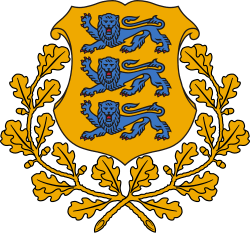 | Country: Estonia |
|
| Type: Coat Of Arms | ||
| Link: Coat of arms of Estonia | ||
| Description: The coat of arms of Estonia depicts a golden shield, which includes three slim blue passant gardant lions with red tongues in the middle and golden oak branches along both sides of the shield. The lesser coat of arms lacks these oak branches. The three lions derive from the arms of Danish king Valdemar II who had conquered northern Estonia in 1219. The lions became part of the greater coat of arms of Tallinn, the centre of Danish government in Estonia, and the knightages (ger. ritterschaften) of Harria and Viru.
In 1346, Denmark sold its Estonian dominion to the Teutonic Order after its power had been severely weakened during the St. George's Night Uprising of 1343-1346. The three lions, however, remained the central element of the greater coat of arms of Tallinn. In later centuries, the motif of the three lions transferred to the coat of arms of the Duchy of Estonia, the Ritterschaft of Estland, and to the coat of arms of the Governorate of Estonia. The Riigikogu (the state assembly) of the independent Republic of Estonia officially adopted the coat of arms on June 19, 1925. The coat of arms was officially banned following the occupation of Estonia by the Soviet Union in 1940, and replaced with the Soviet-inspired coat of arms of the Estonian SSR. Soviet officials persecuted and jailed anyone using the coat of arms or the national colors of Estonia. The readoption of the national symbols, which was finally achieved on August 7, 1990, marked one of the high points in the struggle for the restoration of independent Estonia. The use of the coat of arms is regulated by the Law on State Coat of Arms, passed on April 6, 1993. | ||
 | Country: Ethiopia | |
| Type: Colored Seal | ||
| Link: Emblem of Ethiopia | ||
| Description: The Emblem of Ethiopia has been in its current form since 1996. It contains a yellow interlaced pentagram radiating rays of light on a blue shield. Today, the pentagram stands for the unity of the people and the nationality of Ethiopia.
The emblem also appears on the centre of the flag of Ethiopia. In 1975, an earlier version of the emblem of Ethiopia was adopted, consisting of a plow on a yellow sunburst surrounded by a wreath. It was associated with the Derg regime. Prior to 1975, there was a European heraldry-influenced imperial coat of arms for the Ethiopian Empire. |
F
| Display | Comments | Alternate symbol |
|---|---|---|
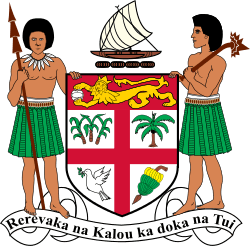 | Country: Fiji |
|
| Type: Heraldic Achievement | ||
| Link: Coat of arms of Fiji | ||
| Description: The colours and objects on the coat of arms carry cultural, political, and regional meanings. The Cross of St. George—which divides the shield quarterly—and the golden lion at the top represent the United Kingdom, the former colonial power that ruled over Fiji. The cacao pod held in the lion's paw, along with the sugarcane, coconut palm and bananas occupying three of the four quadrants, represent the country's natural resources, since these are key agricultural crops in Fiji. The bottom left quadrant contains a dove that symbolizes peace – this was utilized on the country's flag during the reign of King Cakobau, whose government was the last before the commencement of British rule.
The crest at the top depicts a takia – a traditional Fijian canoe – while the supporters grasping the shield on both sides are Fijian warriors. According to legend, they are twins – the older brother is clutching a spear, while the younger one holds a war club. At the bottom is the country's motto – Fear God and honour the Queen (Fijian: Rerevaka na kalou ka doka na Tui). | ||
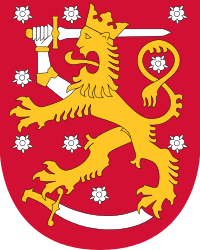 | Country: Finland | |
| Type: Heraldic Achievement | ||
| Link: Coat of arms of Finland | ||
| Description: The blazon of the national coat of arms was finally settled in 1978, when the law of 26 May 1978 (381/78) described the coat of arms as follows: On a red field, a crowned lion, the right forepaw replaced with an armoured hand brandishing a sword, trampling on a saber with the hindpaws, the lion, crowned and armed, the weapons hilted and the armour garnished gold, the blades and the armour silver, the field strewn with nine roses of silver.[4] (This is, however, a direct translation from Finnish; the heraldic blazon would be Gules, a lion crowned Or rampant striking with a sword Argent on his armoured dexter arm, trampling on a sabre Argent; surmounted with nine roses Argent)
The coat of arms appears on the Finnish state flag. The Finnish lion is also used in a wide variety of emblems of different state authorities, often modified to depict the duties of the unit or the authority. On the other hand, the Finnish municipalities and regions usually use heraldic motifs drawn from elsewhere, leaving the lion for state use (exceptions exist, such as the Coat of arms of Jakobstad). Finnish lion also appears as armed force's generals' rank insigna and in navy as part of officer's rank insigna. | ||
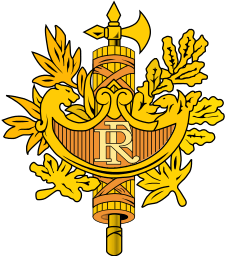 | Country: France | |
| Type: Heraldic Achievement | ||
| Link: Emblem Of France | ||
| Description: The current Emblem of France has been a symbol of France since 1953, although it does not have any legal status as an official coat of arms. It appears on the cover of French passports and was adopted originally by the French Foreign Ministry as a symbol for use by diplomatic and consular missions in 1912 using a design by the sculptor Jules-Clément Chaplain.
In 1953, France received a request from the United Nations for a copy of the national coat of arms to be displayed alongside the coats of arms of other member states in its assembly chamber. An interministerial commission requested Robert Louis (1902–1965), heraldic artist, to produce a version of the Chaplain design. This did not, however, constitute an adoption of an official coat of arms by the Republic. | ||
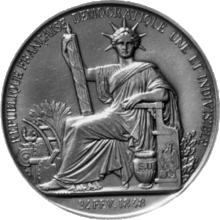 | Country: France | |
| Type: National Seal | ||
| Link: Great Seal of France | ||
| Description: The Great Seal features Liberty personified as a seated Juno wearing a crown with seven arches. She holds a fasces and is supported by a ship's tiller with a cock carved or printed on it. At her feet is a vase with the letters "SU" ("Suffrage Universel", "Universal suffrage"). At her right, in the background, are symbols of the arts (painter's tools), architecture (Ionic order), education (burning lamp), agriculture (a sheaf of wheat) and industry (a cog wheel). The scene is surrounded by the legend "RÉPUBLIQUE FRANÇAISE, DÉMOCRATIQUE, UNE ET INDIVISIBLE" ("French Republic, democratic, one and undividable") and "24 FEV.1848" (24 February 1848) at the bottom.
The reverse bears the words "AU NOM DU PEUPLE FRANÇAIS" ("in the name of the French people") surrounded by a crown of oak (symbol of perenity) and laurel (symbol of glory) leaves tied together with weed and grapes (agriculture and wealth), with the circular national motto "LIBERTÉ, ÉGALITÉ, FRATERNITÉ". |
G
-
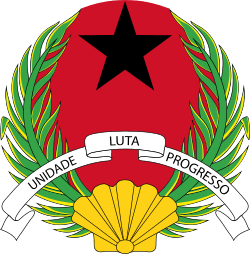
Coat of arms of Guinea-Bissau
H
I
J
K
-

Emblem of Kazakhstan -
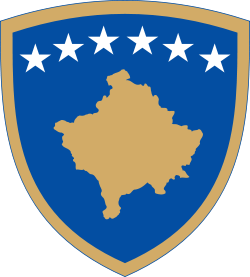
Coat of arms of Kosovo -
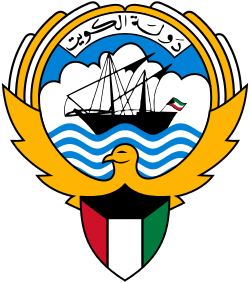
Coat of arms of Kuwait -
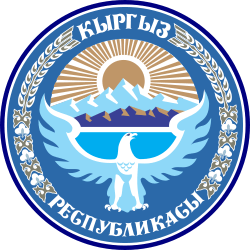
Emblem of Kyrgyzstan
L
-
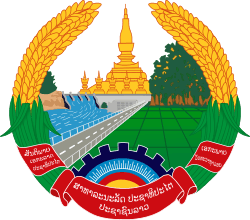
Emblem of Laos
Libya currently doesn't have any official coat of arms, seal or emblem.
M
-
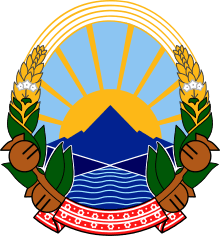
Emblem of the Republic of Macedonia
-

Emblem of Madagascar -
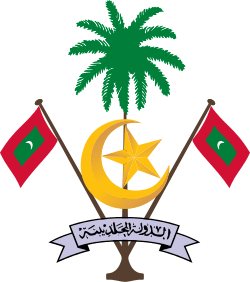
Emblem of Maldives
-

Emblem of Mali
-
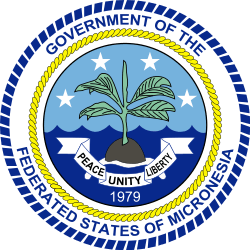
Emblem of the Federated States of Micronesia -

Emblem of Mongolia -
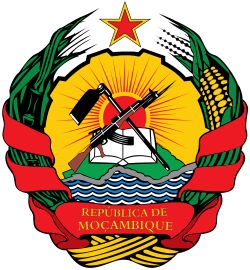
Emblem of Mozambique
For Myanmar, see Burma
N
-

Coat of arms of Northern Cyprus
O
-
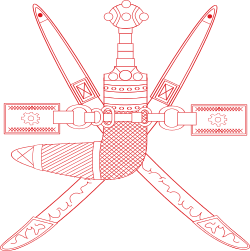
National Emblem of Oman
P
-

Coat of arms of Pakistan -

Seal of Palau -
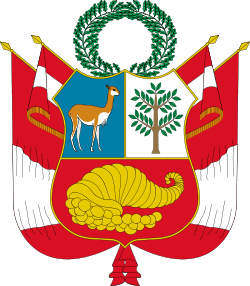
National (or Greater) Coat of arms of Peru (Escudo Nacional) -
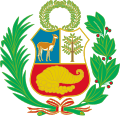
(Lesser) Coat of arms of Peru (Escudo de Armas) -

Coat of arms of the Philippines
Q
-
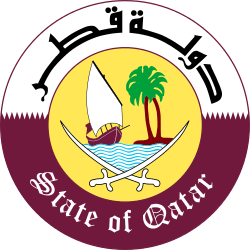
Emblem of Qatar
R
-
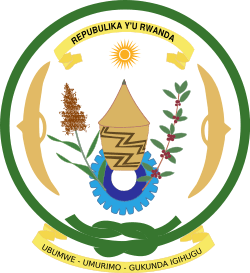
Emblem of Rwanda
S
-
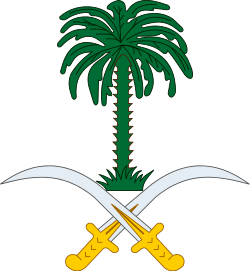
Emblem of Saudi Arabia -
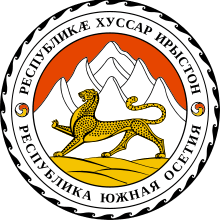
Coat of arms of South Ossetia
T
-
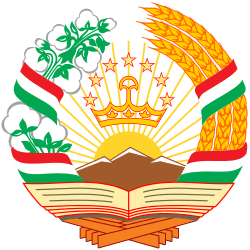
Emblem of Tajikistan -
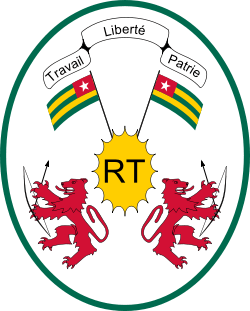
Coat of arms of Togo -
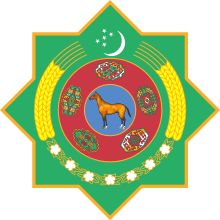
Emblem of Turkmenistan
For Taiwan, see China, Republic of.
U
-
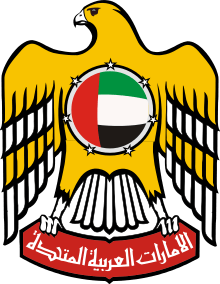
Coat of arms of the United Arab Emirates -
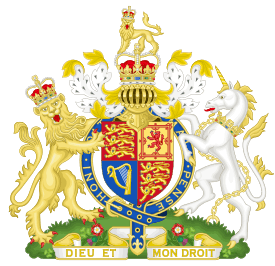
Coat of arms of the United Kingdom, for use in England, Wales and Northern Ireland
-
.svg.png)
Coat of arms of the United Kingdom, for use in Scotland
-
.svg.png)
Great Seal of the United States (obverse) -
.svg.png)
Great Seal of the United States (reverse) -
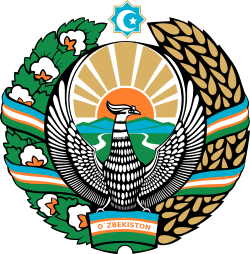
Emblem of Uzbekistan
V
-
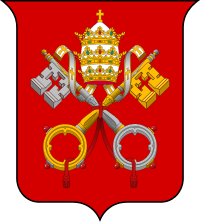
Coat of arms of the Vatican City -
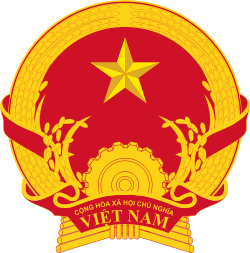
Emblem of Vietnam
Y
-
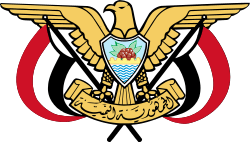
Coat of arms of Yemen
Z
See also
- Gallery of coat of arms of dependent territories
- Gallery of dependent territory flags
- Gallery of sovereign-state flags
- List of sovereign states
References
- ↑ Article 10: Constitution of Abkhazia
- ↑ http://heraldry.ge/index.php?m=844&lng=eng
- ↑ "National country symbols of Argentina". National-symbol.com. Retrieved November 27, 2011.
- ↑ "Que el Escudo, la Bandera, el Himno y su letra son los símbolos de la soberanía de la Nación." [That the Coat of Arms, the Flag, the Anthem, and its lyrics are the symbols of the sovereignty of the Nation.] (in Spanish). Ministry of Economy and Production. Retrieved November 27, 2011.
En adelante se adoptará como representación del escudo argentino, la reproducción fiel del Sello que usó la Soberana Asamblea General Constituyente de la Provincias Unidas del Río de la Plata, el mismo que ésta ordenó en sesión de 12 de marzo de 1813, usase el Poder Ejecutivo.
- ↑ Neubecker, Ottfried (1998/2002). Wappenkunde (in German). Munich: Orbis Verlag. p. 241. ISBN 3-572-01336-4. Check date values in:
|date=(help) - ↑ Government of Australia: Department of the Environment and Water Resources
- ↑ Arms of BELIZE - Heraldry of the World. Retrieved 10 March 2012.
- ↑ "The National Symbols". Government of Belize. Retrieved 13 October 2013.
- ↑ Guide to the Flags of the World by Mauro Talocci, revised and updated by Whitney Smith (ISBN 0-688-01141-1), p. 165.
- ↑ http://missions.itu.int/~myanmar/pressrelease_PMGev/NationalConstitution(Draft)2008.pdf
- ↑ Guide to the Flags of the World by Mauro Talocci, revised and updated by Whitney Smith (ISBN 0-688-01141-1), p. 153.
- ↑ Unlocking Horns: Forgiveness and Reconciliation in Burundi, p. 16, at Google Books
- ↑ National arms of Cameroon
- ↑ Department of Canadian Heritage (2008). "Canada: Symbols of Canada" (PDF). Ottawa: Queen's Printer for Canada. p. 6. Retrieved 9 September 2009.
- ↑ "The Public Register of Arms, Flags and Badges of Canada, Vol. IV, p. 457". The Canadian Heraldic Authority. Retrieved 1 December 2011.
- ↑ "The Coat of Arms of Canada – A Short History". Royal Heraldry Society of Canada. Retrieved 28 June 2009.
- ↑ Treasury Board of Canada Secretariat. "Federal Identity Program > Top 10 Policy Guidance Issues". Queen's Printer for Canada. Retrieved 4 February 2011.
- ↑ 18.0 18.1 Tidridge, Nathan (2011). Canada's Constitutional Monarchy: An Introduction to Our Form of Government. Toronto: Dundurn Press. p. 71. ISBN 9781459700840.
- ↑ Swann, Conrad. "Chapter I, Arms of dominion and sovereignty and public authority". Canada Symbols of Sovereignty: An investigation of the arms and seals borne from the earliest times to the present in connection with public authority in and over Canada. along with consideration of some connected flags. Toronto: University of Toronto Press.
- ↑ Guide to the Flags of the World by Mauro Talocci, revised and updated by Whitney Smith (ISBN 0-688-01141-1), p. 145.
- ↑ Guide to the Flags of the World by Mauro Talocci, revised and updated by Whitney Smith (ISBN 0-688-01141-1), p. 127.
- ↑ Description of the National Emblem from Chinese Government web portal.
- ↑ Constitution de la République démocratique du Congo
- ↑ 24.0 24.1 History of the Coat of Arms of Costa Rica Accessed 2008-02-01 (Spanish)
- ↑ 25.0 25.1 The 1998 Executive Decree Accessed 2011-07-19 (Spanish)
External links
- Heraldry of the World, International Civic Arms (over 100.000 arms of countries, states etc.)
| ||||||||||
| ||||||||||||||
| ||||||||||
| ||||||||||
| ||||||||||||||||
| ||||||||||||||

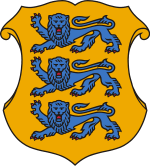

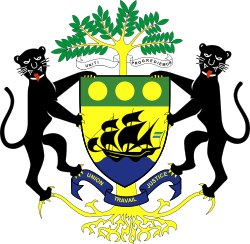
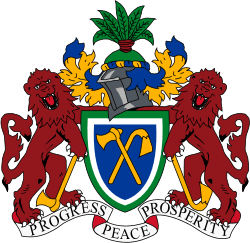
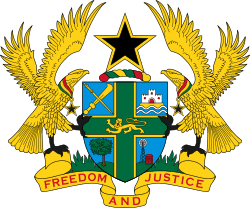



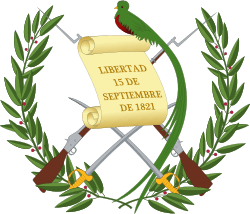

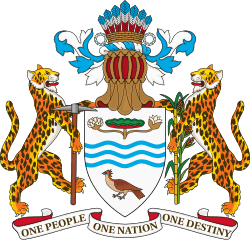

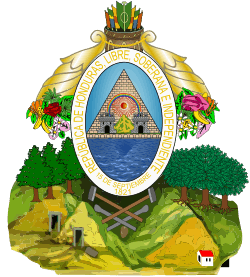
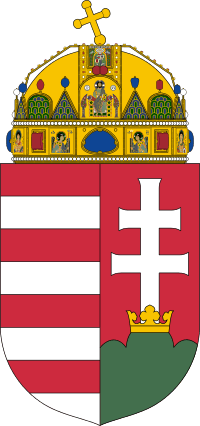
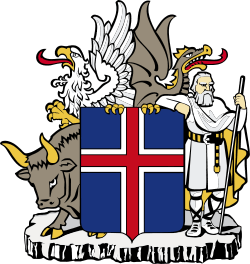


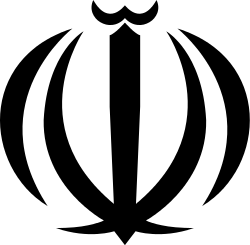
_of_Iraq_2008.svg.png)
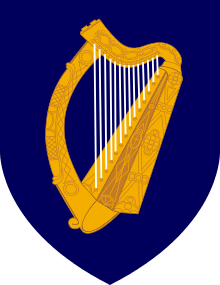
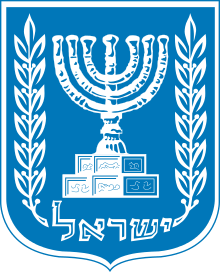

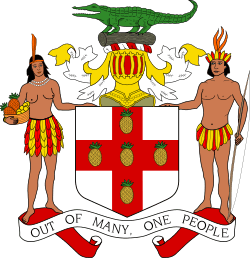

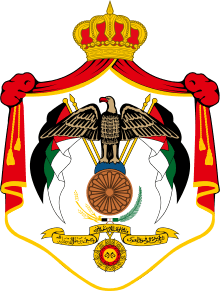
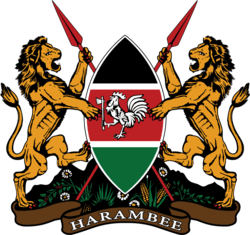

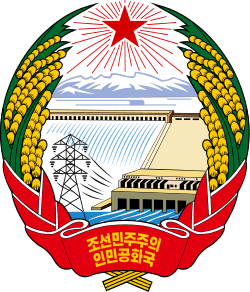
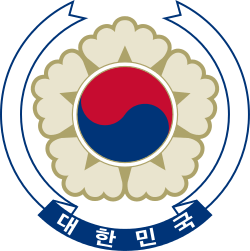
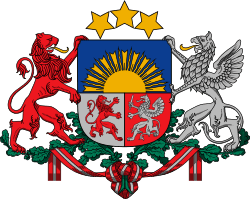
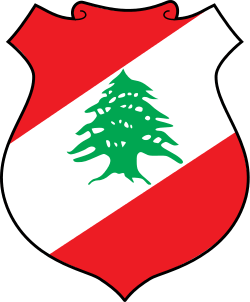
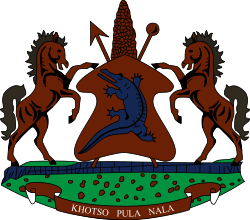
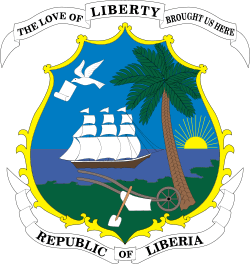


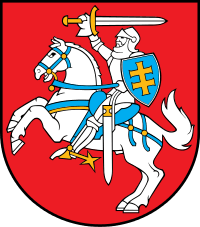
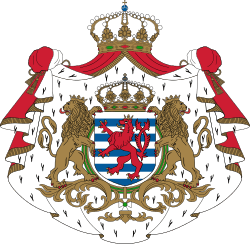
.svg.png)


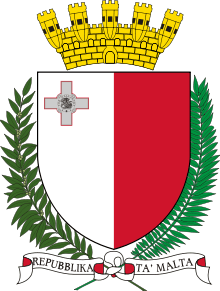
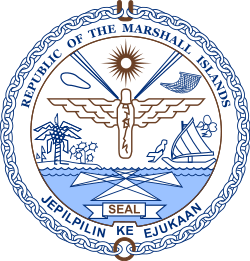

.svg.png)
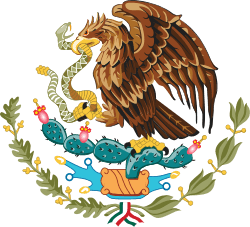
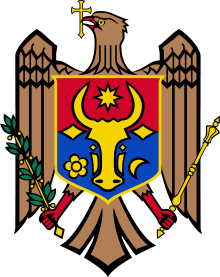
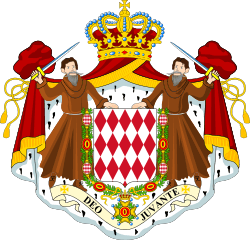

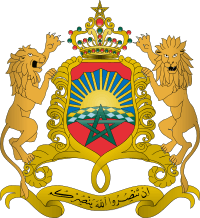
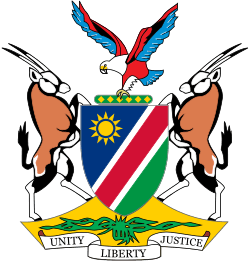

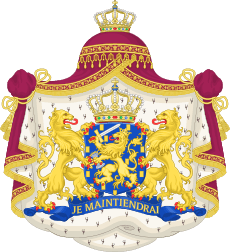


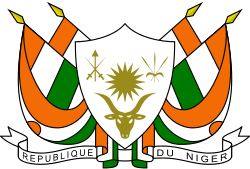

.svg.png)
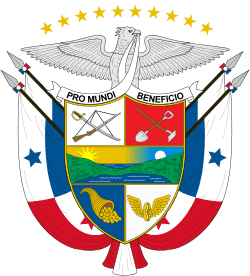
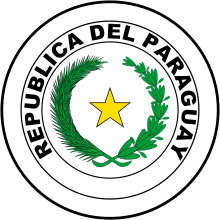
.svg.png)

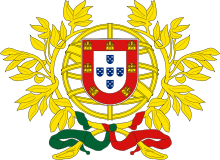
.svg.png)


.svg.png)
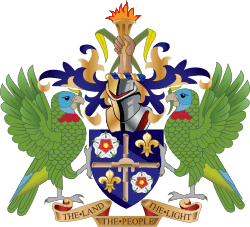
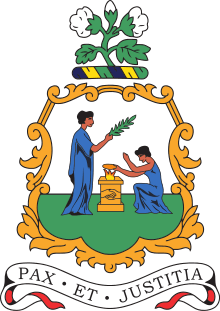
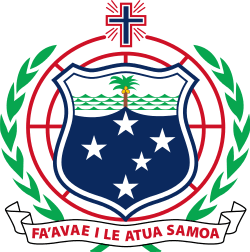
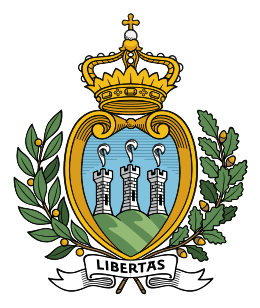

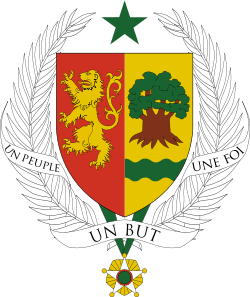
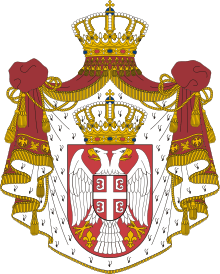
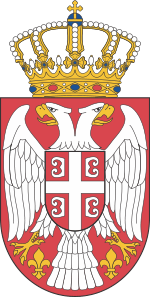

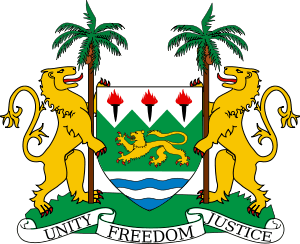
.svg.png)
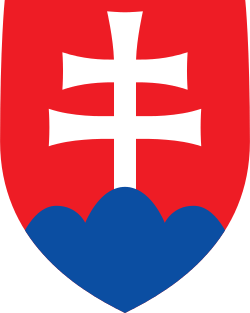
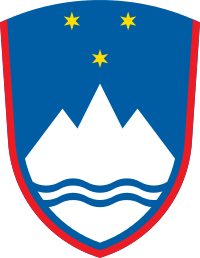
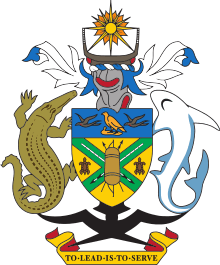

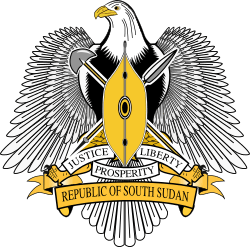
.svg.png)
